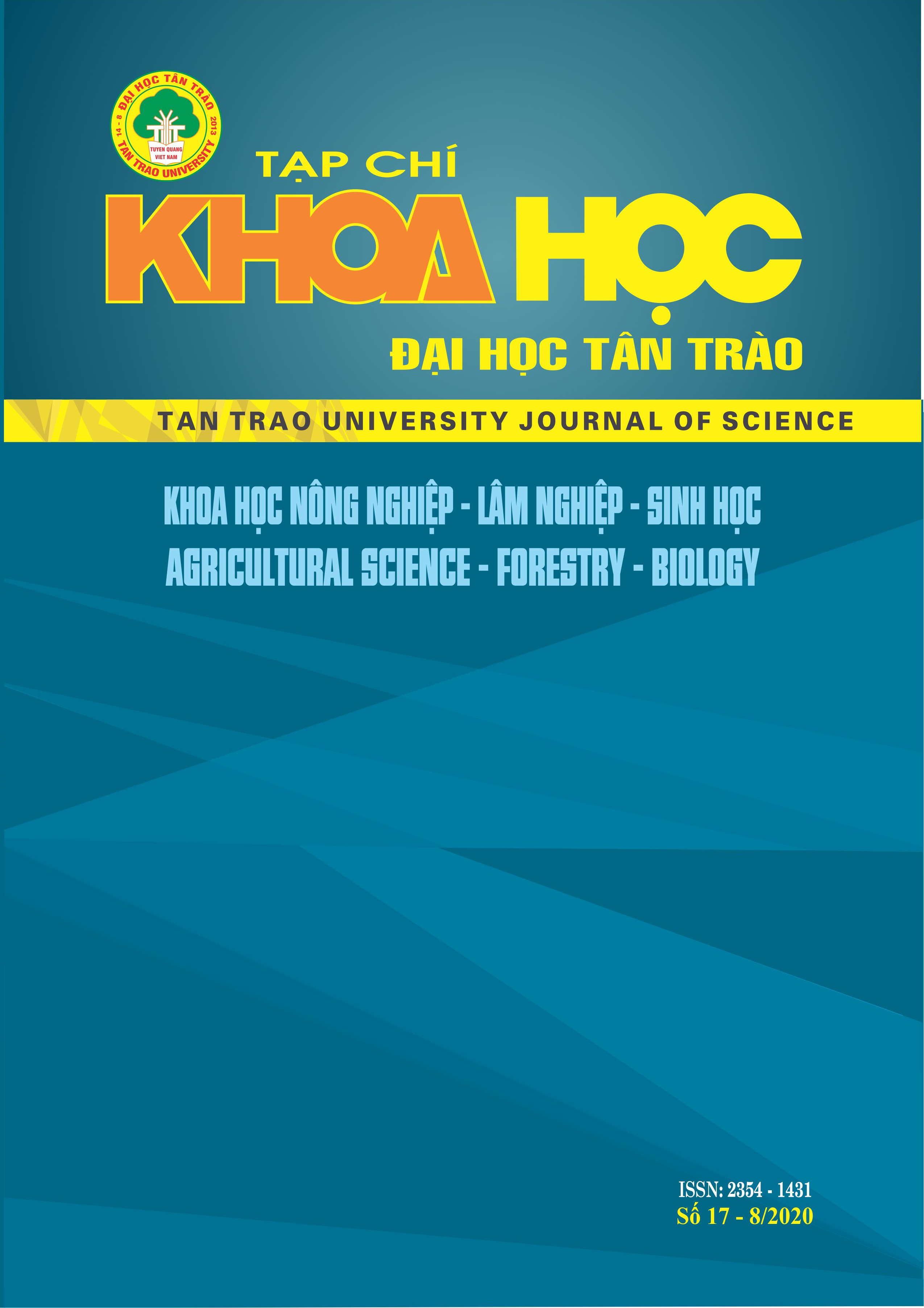NGHIÊN CỨU ĐẶC ĐIỂM SINH HỌC, KHẢ NĂNG SẢN XUẤT VÀ HIỆU QUẢ KINH TẾ CỦA VỊT TRỜI NUÔI TẠI NINH BÌNH
DOI:
https://doi.org/10.51453/2354-1431/2020/372Từ khóa:
Äặc Ä‘iểm sinh hoÌ£c, khả năng sản xuâÌt, sinh trưởng, viÌ£t trÆ¡Ì€iTóm tắt
Qua nghiên cứu cho thấy vịt trời nuôi tại nông hộ tỉnh Ninh Bình con non có lông màu nâu xám, lông cổ, lông ức màu vàng, lông phần lưng có chấm vàng, đầu có sọc vàng kéo xuống dưới, phần cổ và hai bên mắt có một vệt đen từ mắt kéo dài ra sau, chân có màu đen. Vịt non có tiếng kêu kéc kéc. Vịt trưởng thành tuổi có lông màu xám vằn, lông đuôi màu nâu đen có ánh và viền nâu nhạt, lông cánh ánh xanh, phần mỏ có màu đen, đầu mỏ có vành khuyết màu vàng. Con trống lông cổ dưới màu trắng, cổ có 2 sọc trắng, hai bên mắt có một vệt đen từ mắt kéo dài ra sau, lông đuôi vểnh, có vài lông cong, đầu to, mắt màu nâu sẫm. Vịt trống có tiếng kêu khẹc khẹc. Vịt mái lông đuôi thẳng, hơi cụp xuống, đầu nhỏ hơn con trống có mắt màu nâu nhạt. Vịt mái có tiếng kêu quạc quạc. Tỷ lệ nuôi sống đến 21 tuần tuổi là 98%. Trọng lượng cơ thể lúc mới nở khoảng 42g. Giai đoạn 21 tuần tuổi bình quân con trống đạt 1.452,21 g/con, con mái đạt 1.264,92 g/con. Tiêu tốn thức ăn trung bình giai đoạn từ sơ sinh - 21 tuần tuổi của con trống là 7,43 kg và con mái là 8,07 kg. Tỷ lệ thân thịt, tỷ lệ thịt đùi + thịt ngực của con trống và con mái lần lượt là 63,80 - 62,94% và 48,23 - 51,30%.
Tải xuống
Tài liệu tham khảo
1. Nguyen Van Ban (2000), research on some biological characteristics and production features of Co duck, Khaki Campbell and F1 crossbreeds breeding in Thanh Liem, Ha Nam, PhD thesis in Biology, Hanoi University of Education.
2. Nguyen Duc Cuong (2017), "Research on the adaptability of the breed" Mallard "was domesticated in Tran Yen district, Yen Bai province ", scientific research report of Department of Science and Technology of Yen Bai province, p. 30 - 36.
3. Nguyen Thi Minh, Nguyen Duc Trong, Nguyen Thi Thuy Nghia and Dong Thi Quyen (2007), "Research on biological characteristics and production ability of the Zhe Giang duck", Scientific report of livestock institute. p. 62 – 69.
4. Luong Tat Nhay (1994), Growth characteristics for meat and duck feathers CV Super M raised in Northern Vietnam, PhD thesis, Vietnam Institute of Agricultural Science and Technology.
5. Nguyen Duc Trong, Nguyen Van Duy, Hoang Van Tieu, Vuong Lan Anh, Nguyen Thi Thuy Nghia, Dong Thi Quyen, Vu Hoang Chung and Hoang Van Truong (2010), "Characteristics of appearance and production capacity of the cross-breed of grass duck and Zhe Giang duck", Scientific report 2010 - National Institute of Livestock Production, p. 126 - 135.
6. Nguyen Hoang Thinh, Tran Bich Phuong and Nguyen Dang Cuong (2018), meat production ability of mallard duck (Anas superciliosa), Publisher: Vietnam Academy of Agriculture, Hanoi p. 39 - 48.
7. Phung Duc Tien, Nguyen Ngoc Dung, Le Thi Nga, Vu Duc Canh, Nguyen Thi Huong, Pham Thi Xuan, Le Thi Cam, Tran Thi Thu Hang, Nguyen Thi Luyen (2010), Select SD ducks bred varieties. Scientific report 2007 National Institute of Livestock Production. Genetic part like pets. Hanoi, 2010.
Tải xuống
Đã Xuất bản
Cách trích dẫn
Số
Chuyên mục
Giấy phép

Tác phẩm này được cấp phép theo Giấy phép Quốc tế Creative Commons Attribution-ShareAlike 4.0 .
Bài báo được xuất bản ở Tạp chí Khoa học Đại học Tân Trào được cấp phép theo giấy phép Ghi công - Chia sẻ tương tự 4.0 Quốc tế (CC BY-SA). Theo đó, các tác giả khác có thể sao chép, chuyển đổi hay phân phối lại các bài báo này với mục đích hợp pháp trên mọi phương tiện, với điều kiện họ trích dẫn tác giả, Tạp chí Khoa học Đại học Tân Trào và đường link đến bản quyền; nêu rõ các thay đổi đã thực hiện và các nghiên cứu đăng lại được tiến hành theo cùng một bản quyền.
Bản quyền bài báo thuộc về các tác giả, không hạn chế số lượng. Tạp chí Khoa học Tân Trào được cấp giấy phép không độc quyền để xuất bản bài báo với tư cách nhà xuất bản nguồn, kèm theo quyền thương mại để in các bài báo cung cấp cho các thư viện và cá nhân.
Mặc dù các điều khoản của giấy phép CC BY-SA không dành cho các tác giả (với tư cách là người giữ bản quyền của bài báo, họ không bị hạn chế về quyền hạn), khi gửi bài tới Tạp chí Khoa học Đại học Tân Trào, tác giả cần đáp ứng quyền của độc giả, và cần cấp quyền cho bên thứ 3 sử dụng bài báo của họ trong phạm vi của giấy phép.






